Radio Telescope – Data Analysis
After setting up the Radio JOVE 2.1 receiver and the antenna system successfully, you are now ready to make radio observations and take data. We hope your setup is at a radio-quiet location where it is relatively free of radio frequency interference (RFI). We must recognize, however, that neither the antenna nor the radio receiver system has the capability to distinguish whether the detected signals are coming from Jupiter, the Sun, the Galactic radio background, or from radio stations or other local interference like fluorescent lights, a lawnmower, or a heat pump/air conditioner.
With practice you will be able to recognize many types of astronomical signals in your spectrograph data compared with terrestrial interference. Below are a few examples of spectrographs.
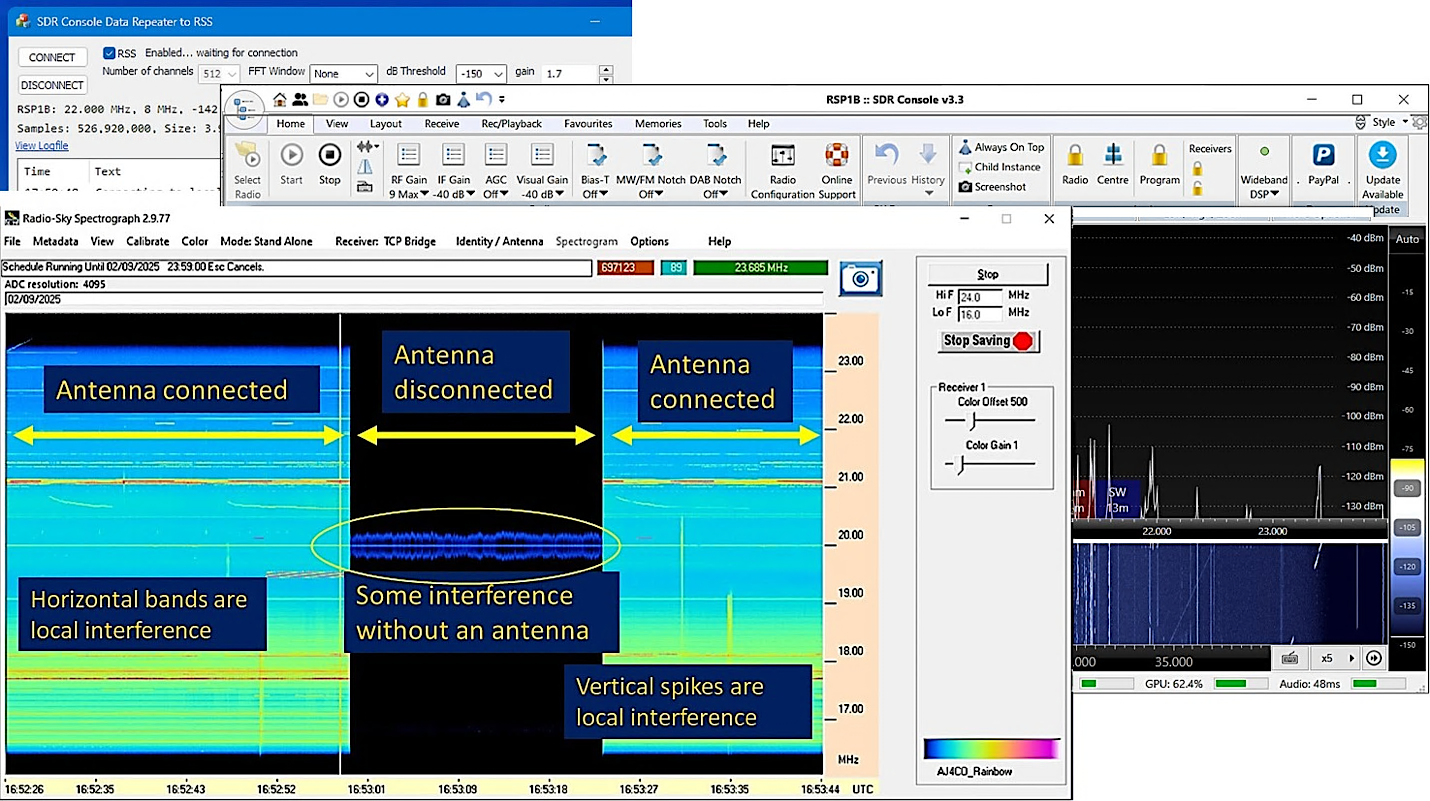
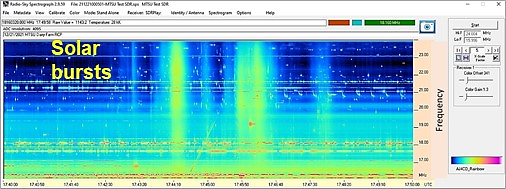
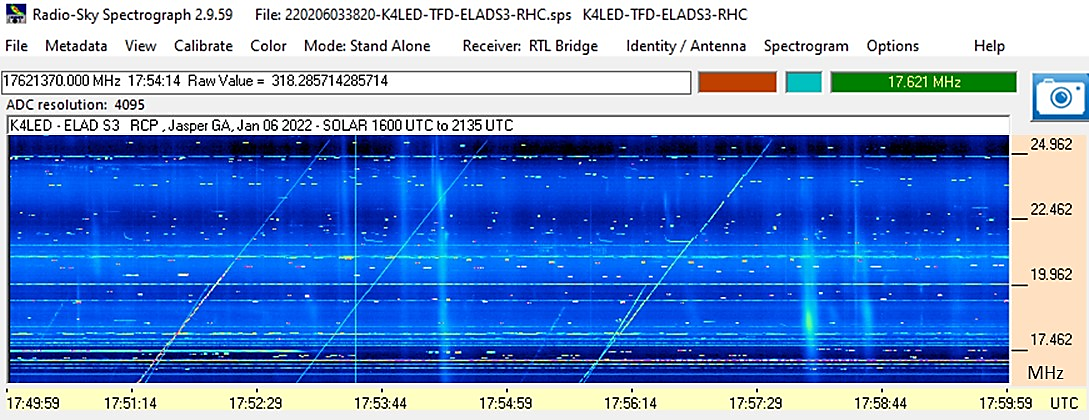
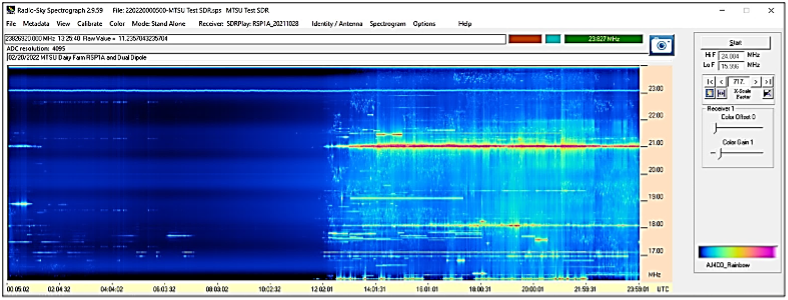
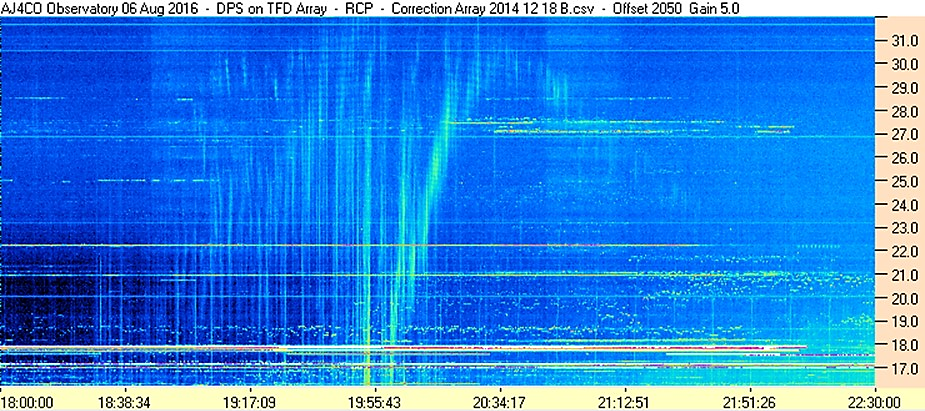
Please check back here periodically for more examples of spectral features and for more information on spectrograph data processing.
For an excellent summary of data reduction techniques with the original Radio JOVE RJ1.1 receiver, see the material on this web page:
https://radiojove.gsfc.nasa.gov/radio_telescope/rj1.1/rj1.1_data_analysis.php

